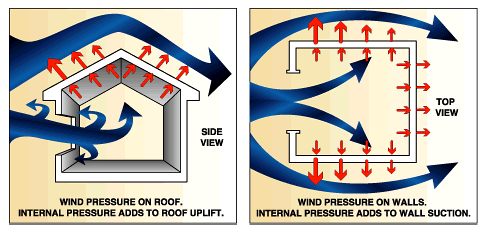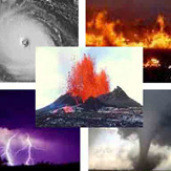There are many things you can do to protect yourself, your home and your property before any type of natural hazard or disaster strikes. One of the most important things we can do is learn about hazards and risks that affect where we live and take personal responsibility to try and mitigate those things.
What is Mitigation?
Mitigation simply means an effort to lessen the impact disasters have on people, property, communities and the economy. It is also about reducing or eliminating risks before disasters strike and involves planning, commitment, preparation and communication between local, state and federal government officials, businesses and the general public.
Mitigation can also lessen the financial impact on individuals, communities, and society as a whole. For example, a recent study by the Multi-hazard Mitigation Council shows that each dollar spent on mitigation saves society an average of four dollars.
So what is wind mitigation?
Wind damage is the most common disaster-related expense and usually accounts for 70% or more of the insured losses reported worldwide. Many natural disasters like hurricanes, tornadoes, microbursts or thunderstorms and winter storms include damaging winds. And certain parts of the world experience high winds on a normal basis due to wind patterns.
Realize when extreme winds strike they are not constant - they rapidly increase and decrease. A home in the path of wind causes the wind to change direction. This change in wind direction increases pressure on parts of the house creating stress which causes the connections between building components to fail. For example, the roof or siding can be pulled off or the windows can be pushed in.

Basically these winds create forces that attack the structure in multiple ways: vertically, resulting in uplift forces, and horizontally, resulting in racking, sliding and overturning forces.

Uplift occurs when the wind flows over a home’s roof, creating a lifting effect. Racking and sliding occur when the wind exerts pressure on the home’s side, causes it to lean over (rack) to one side or slide off its foundation. Overturning occurs when strong wind that is unable to rack or slide a home ultimately rotates the home off the foundation.
Without proper design and construction, these forces can produce structural damage and even destruction. So the goal of wind mitigation is to specifically target the structural and nonstructural aspects of your home and surroundings that prevent or lessen damage caused by high winds.
Some tips to help prevent wind damage and loss
Strengthen weak spots on home - Experts believe there are four areas of your home that should be checked for weakness -- the roof, windows, doors and garage doors. Homeowners can take some steps to secure and strengthen these areas but some things should be done by an experienced builder or contractor.
ROOF:
-- Truss bracing or gable end bracing (supports placed strategically to strengthen the roof)
-- Anchors, clips and straps can be installed (may want to call a professional since sometimes difficult to install)
WINDOWS and DOORS:
-- Storm shutters (for windows, French doors, sliding glass doors, and skylights) or keep plywood on hand
-- Reinforced bolt kits for doors
GARAGE DOORS:
-- Certain parts of the country have building codes requiring garage doors to withstand high winds (check with local building officials)
-- Some garage doors can be strengthened with retrofit kits (involves installing horizontal bracing onto each panel)
Secure mobile homes - Make sure your trailer or mobile home is securely anchored. Consult the manufacturer for information on secure tiedown systems.
Secure or tie down loose stuff - Extreme winds can also cause damage from flying debris that can act like missiles and ram through walls, windows or the roof if the wind speeds are high enough. You should consider securing large or heavy equipment inside and out to reduce some of the flying debris like patio furniture, barbeque grills, water heaters, garbage cans, bookcases and shelving, etc.
Consider building a shelter or “safe room” - Shelters or “safe rooms” are designed to provide protection from the high winds expected during hurricanes, tornadoes and from flying debris. Shelters built below ground provide the best protection, but be aware they could be flooded during heavy rains.
FEMA provides a free booklet called “Taking Shelter From the Storm: Building a Safe Room Inside Your House” developed in association with the Wind Engineering Research Center at Texas Tech University at www.fema.gov . Also, the Florida Division of Emergency Management has several great mitigation resources at www.floridadisaster.org
Remember... the more you prepare before disaster strikes, the better off you and your loved ones will be financially, emotionally and physically.
Download and share a free portion of USFRA's Family Preparedness and First Aid manual here



